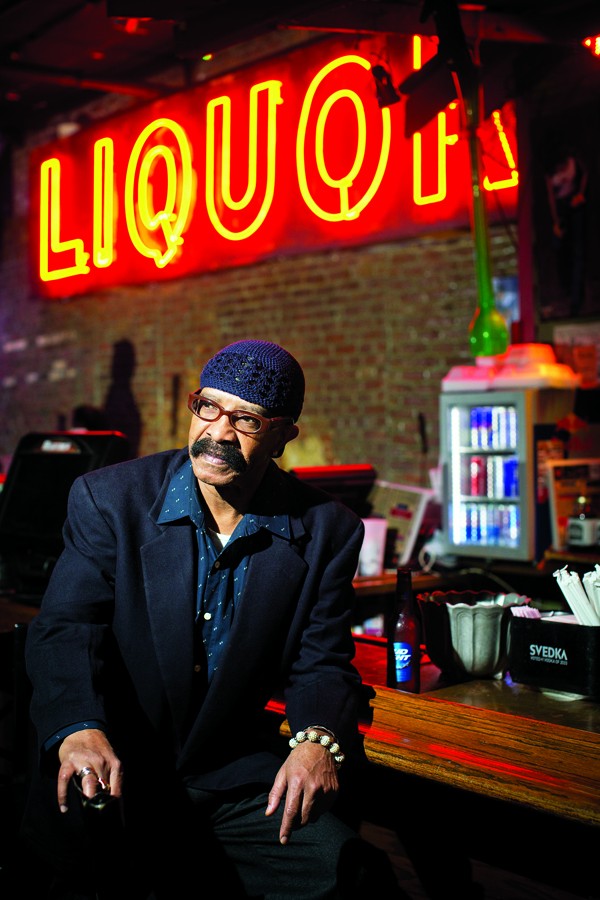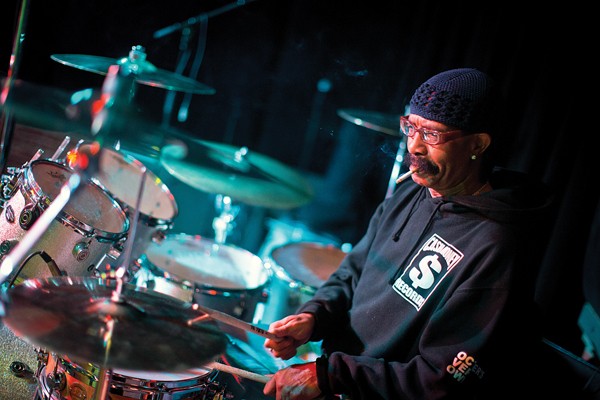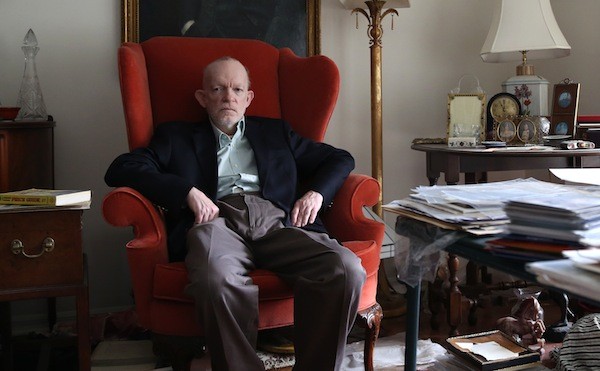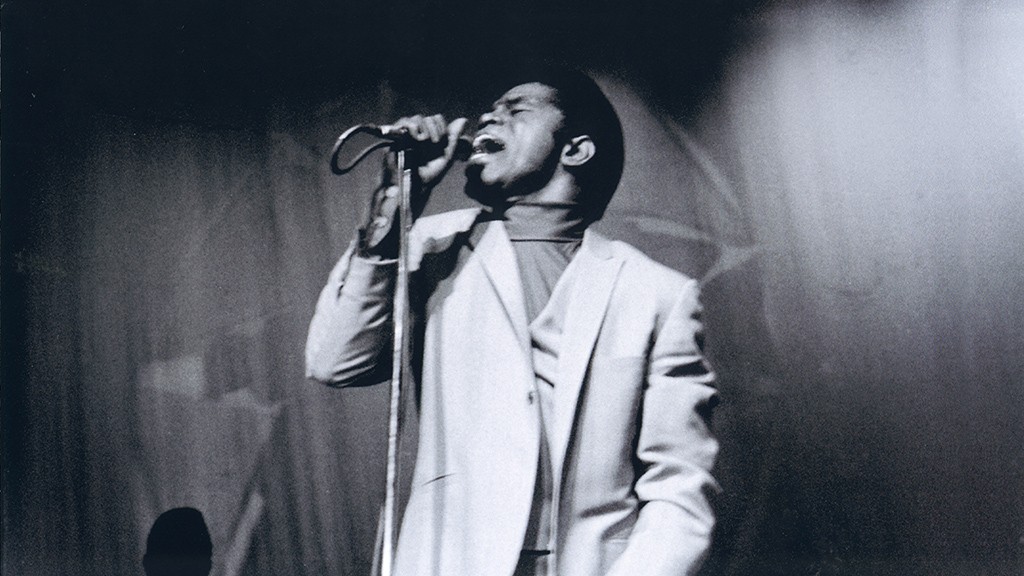
Steve Binder & Elvis Presley on the set of Singer Presents… Elvis.
Whether you recognize the name or not, producer/director Steve Binder is probably responsible for developing a considerable portion of your favorite pop-culture real estate. Before directing a landmark 1964 concert film, The T.A.M.I. Show, featuring James Brown, The Rolling Stones, The Supremes, Chuck Berry (and Marvin Gay, and The Beach Boys, and Gerry and the Pacemakers, and The Ronettes), and a full roster of future music industry legends. Binder worked on The Steve Allen Show. He partnered with top-shelf music producer Bones Howe. He produced Pee Wee’s Playhouse. Star Wars completists can thank him for directing the Infamous Star Wars Holiday Special, which might have been considerably worse, had Binder not been called in to salvage the project, when the network’s first choice didn’t work out. In 1968, Binder accepted an offer to direct the NBC TV special Singer Presents… Elvis, better known now as the “’68 Comeback.”
This week Binder’s coming to Memphis and Graceland to help celebrate the 50th anniversary of Singer Presents…, and sign copies of his book Comeback ’68: The Story of the Elvis Special. Here’s some of what he had to say about his work on The T.A.M.I. Show, and the NBC special that marked his return to serious recording and live performance.
Memphis Flyer: I know we’re supposed to talk about Elvis, but I don’t think there’s a ‘68 Comeback without the T.A.M.I. Show in 1964. So I’d like to start there, if it’s okay.
Steve Binder: To begin with, I was directing Steve Allen at the time, and in the middle of it we took a hiatus. So I had an opportunity to collaborate again with Bill Sargent, The T.A.M.I. Show producer. Bill was really a great promoter. He didn’t have a lot of input creatively. He’d just finished producing [a filmed version of] Richard Burton on Broadway doing Hamlet. His idea — he was so far ahead of his time. Everything we’re watching today on digital, Bill thought about those things in the 1960’s.
What you guys were basically doing with T.A.M.I. is an early version of HDTV, right?
He took electronic cameras, when everybody had just transferred over to video tape, and he thought Kinescope was over. I don’t want to get too technical, but American television designated, when it went on the air, that it could only have 525 vertical and horizontal lines for the picture. Bill had a technical background in the Navy. He thought, you know, if we’re not being restricted by the FCC, we can have as many lines as we want and make the quality much better than a television picture. Therefore we can project on theatrical screens, 30 feet high. Back in those days he called it either Electronovision or Theatrovision.
Q & A with ’68 Comeback and T.A.M.I. Show director, Steve Binder
And he came to me and asked if I was interested, because I’d done another project with him that was shown in arenas all over the world, starring Burt Lancaster and a whole cast of stars. It was during the period when schools were segregated and this was to celebrate the desegregation of schools. Burt not only hosted the show, he also sang and danced. It was pretty successful. It played in Madison Square Garden. It played at the Los Angeles Sports Arena and places like that all over the country.
So he came to me and said, I’ve just done Richard Burton doing Hamlet and I’d like to do another project right away. So we kind of came up with the idea of doing a rock and roll concert. It was obviously the decade with the Vietnam War, the Kennedy assassinations, and the assassination of Martin Luther King and so forth. This obviously preempted a lot of all of that. But, Bill didn’t give me any restrictions whatsoever. And Jack Nietzsche was the great composer and producer on the East Coast, and Phil Spector on the West Coast, were the two biggest producers in Rock music. And Jack was the musical director of The T.A.M.I. Show. He later went on to do the score for One Flew Over the Cuckoo’s Nest and other major motion pictures. But Jack is the one who really determined who the hot acts were that year. And gave the Sargent the list.
Sergeant wanted to get the Beatles on the show, but instead he got Brian Epstein to give him Gerry and the Pacemakers and Billy J. Kramer. Those were his acts. In fact the songs that Billy sang on the show were written by the Beatles.
And James Brown
I didn’t even know who James Brown was, let alone how to improvise filming him. But I went to James and said we are ready to rehearse your set. He said you won’t need any rehearsal; you’ll know what to do when you see me. Everybody else I got one run through with to at least look at the apps. Obviously I went out and got their albums. None of them were superstars at the time. In fact, when the Rolling Stones were booked they were just the Rolling Stones. Mick Jagger wasn’t even popping out as Mick Jagger and the Rolling Stones. Same with Diana Ross when we had the Supremes. It was just the Supremes and so forth. We mixed in English acts, because the British Invasion it just started. So we mix those acts with East Coast acts, West Coast Acts, Midwest Acts. None of us knew. I think of nine or 10 acts, eight of them are in the Rock and Roll Hall of Fame now. Nobody could have predicted that in 1964.
Q & A with ’68 Comeback and T.A.M.I. Show director, Steve Binder (2)
And all of them are huge. It almost seems unlikely that anybody could pick that many winners.
Chris? Who was the biggest star we had on the show do you think?
I’m probably wrong, but I’m going to guess it was Leslie Gore.
She was. She was the biggest recording artist we had on the film.
And she’s amazing. I know she wasn’t out of the closet yet, but re-watching Leslie’s performance of “You Don’t Own Me,” really drove home what an intersectional show this was in 1964. It was male, female, black, white, gay, straight. Like this utopian vision of a better future through rock and soul. And wasn’t a portion of any profit supposed to go toward empowering youth in their communities? Or fostering music scenes. The whole thing feels ahead of its time and I’m not sure there’s really been a concert film quite like it since.
There hasn’t been. Sergeant was like one of the Mel Brooks characters in The Producers. He would go out and sell 300 percent of something. It would turn into a hit, and then he was screwed. So he went bankrupt on every film he ever did practically, throughout his career. He never had a successful movie that he held onto. The T.A.M.I. Show was actually picked up by AIP, who were doing all the beach bunny movies at the time with Frankie Avalon and Annette Funicello. They had Vincent Price doing horror movies. American International pictures. They picked it up and then they called me and said they want to do another T.A.M.I. movie. The concept was we were going to do an annual event. And the money was going to go, or at least a great portion of it, to music acts all over the United States.
The minute AIP took it over, they were just interested in making money for themselves. So they took it. The actor who was the star of The Man from U.N.C.L.E. was to host it. They put a lot of acts on the TNT show that weren’t rock-and-roll acts at all. They were very successful acts, but more middle-of-the-road. Even Ray Charles at the time was on the TNT show. As great as he was, he was not considered rock-and-roll. So it was a case of pride and I turned it down. They gave the music concept to Phil Spector, who I did respect in those days a great deal. Phil literally begged me on his knees to direct the TNT show. I said I couldn’t. I mean it’s not the same concept. It’s not going to have the same impact.
Q & A with ’68 Comeback and T.A.M.I. Show director, Steve Binder (3)
I like how real it is. The crowd is excited in a way you can’t fake. But most importantly, the bands seem to be having a great time. A great time playing, a great time interacting with the audience.
The only thing I contributed to that was making sure all the acts participated with no egos. And they would all be there for the entire two days that we filmed. They all rooted for each other. They bonded with each other. A lot of the dancers dated a lot of the acts, as a matter of fact. It wasn’t a case of one-upmanship. It was more a case of trying to do their best. I think Mick Jagger or Keith put out a Rolling Stone interview saying it was the worst decision they ever made to follow James Brown. I think it was the best decision. Because I don’t think we would have gotten that performance out of [Mick]. I think he thought he was James Brown after he saw James Brown perform.
Q & A with ’68 Comeback and T.A.M.I. Show director, Steve Binder (4)
I’ve followed some of that. Brown’s performance is unquestionably the show’s climax, but there’s something nice about starting with Chuck Berry and bookending that with The Stones and Keith Richards on guitar, before bringing everybody back for the finale.
I think so too. And all of that was very intentional. I wanted everyone who saw the film to know it was live. So, we had a first act and all the artists who appeared in the first act come out at the end of the first act. And then having all the artists come out at the end reinforced that they were all there together at the same time.
And very clearly having a blast.
I’ve done nine Diana Ross specials. I did Central Park with her — 1.2 million people there, etcetera. When I think about The Tami Show today, when I had all those dancers go right to The Supremes during their number … To ask a major superstar today, “Hey we’re going to have 25 dancers come through your line while you’re performing.” It would be unheard of. But they all loved it. They loved that they weren’t doing a television show; they were doing a movie movie. That was a big selling point for everybody. They were for real. And that’s what I tried to do with all my shows. I don’t want to see the slicked-down image of a star. I want to see the real inside of a star. You get that. With the Supremes, with Leslie Gore.
Leslie Gore has always been a personal favorite, but it really is hard to imagine her as the biggest star on a bill with The Stones, The Ronnettes, the Beach Boys.
She was phenomenal. I never saw Leslie after that, but stayed in touch. I was happy when she came out. I know the difficulty and the struggle the LGBT community face. Especially being from LA and everything. We don’t have some of the prejudices that other people do in many cases. But they had to fight for every inch of becoming real 100 percent American citizens.
And her performance of “You Don’t Own Me” is just as good as it gets. We’ve talked about how intersectional the film is — and not always in safe ways for the time. I described it as utopian, even. But sometimes, at the corner of a frame, or just for a split instant you’ll see a cop in riot gear. As fun as it all seems, were there also concerns that something might happen?
There were concerns from the city which owned the Santa Monica City Auditorium at the time. And we fought against it. We definitely did not want these uniforms standing in the aisles and so forth. It was interesting because this is the time before any of the kids knew how to react to rock-and-roll. We didn’t have a warm-up guy telling them they should applaud and scream and so forth. We didn’t have signs up saying applaud. This is all real. In fact I didn’t even sweeten the soundtrack. What people saw in the theaters was what happened, because there was no post-production whatsoever. When I looked at James Brown’s performance afterwards one of the engineers asked me if I could hear some of the female kids screaming the F-word. “F-me! f me!” But I couldn’t hear it. It was all natural. It was all really happening. Parents were coming in to drag their kids out of the theater while we were actually filming. It was quite an experience.
We should probably move ahead four years. This utopian vision didn’t quite pan out. Like you said, the country is in turmoil. MLK, Vietnam. It’s a different world when you get the call about directing an Elvis TV special. Music had changed too. And you can’t do it because you’re about to start work on a feature film. Correct?
I was hired by an iconic 1950s producer at the time to do a dramatic feature film. The guy’s name was Walter Wanger. He was famous and he was married at the time to a famous actress. He caught a Universal executive taking her out to dinner and shot him in the balls and became a front-page news story. I think he became more famous for that than his films. Anyway he had a book that he wanted to do, and I just seen the movie Blow Up out of England, and loved it. So I was working on the script when I got a phone call from NBC. I just finished this controversial Harry Belafonte, Petula Clark special.
Bob Finkel was a very good producer and director on his own in the 1950s. He was planning on producing the special himself after they made a deal with Colonel Parker, because Parker knew that the money had dried up in the movie industry to make another Elvis movie. So he went to NBC and said, “I’d like you to finance Elvis’s movie with the caveat that Elvis will do a television special for you.” Well he never told Elvis about this and when he did tell Elvis about this Elvis said, “I don’t want to do television, I’ve been burned on television,” and he had been — except for his first appearance on the Ed Sullivan Show.
They made him wear a tuxedo. Steve Allen put a hound dog in front of him while he was singing. Stuff like that. Bob said, “We’ve got a deal on paper, but we haven’t got Elvis Presley.” He said he’d read about my Petula Clark/Belafonte controversy and realized I was around the same age as Elvis, and had a kind of rebel reputation. He said, “I know I’m not going to be doing it because every time I meet Elvis he calls me Mr. Finkel. We need to find somebody he can relate to.” So I said I wasn’t available. “I’m doing a movie movie.” Fortunately, my partner back then was one of the best record producers on the west coast, Bones Howe. Bones was producing all the hit records for the 5th Dimension, and The Association; he was working with Laura Nyro on “Save the Country.”
Tom Waits, also?
That’s right. Bones overheard my conversation with Steve and he said, “I’ve worked with Elvis. I engineered. I think you and Elvis would hit it off great,” he said. “I think you should do both. I think you need to call Winger and see if you can get permission to do the television special and do the movie.” By the time I got around to calling Wanger back, fate lifts his finger; he dies of a heart attack and this movie is canceled. I’m now free. So I called Finkel and said, “Hey, if you’re still interested, I’m out of my commitment and would be interested in doing Elvis — on one condition. I want to meet Elvis one-on-one. I want to meet him alone, without any entourage or anything.
So they call me back and say, in order to do that I have to meet the Colonel in person. The Colonel will decide if I get to meet Elvis or not. So Bones and I truck out to MGM Studios where Elvis had just finished a movie. That’s where the Colonel’s offices were. And we walked in. And now the Colonel hands me a quarter-inch audio tape of 20 Christmas songs that Elvis had recorded and sent out as a gift to disc jockeys all over America. It’s got a picture of Elvis surrounded by Holly and berries and so forth. He said, “This is the show that NBC and myself and decided on.” In my head instantly I knew this is a show I’m not going to do. So I wrote off the meeting.
We drove back to my offices on Sunset where I get this call: “I don’t know what you did to charm Colonel Parker, but Elvis is going to be your office tomorrow at 4.” I was taken by surprise myself. In my book that I just finished, I go into detail on my first meeting with Colonel Parker and what happened when he presented me to the Snowman’s League for membership.
What was the Colonel’s superpower?
In my experience with Parker? I think he felt and really did believe he had power over people. I saw major executives at NBC who were just terrified of not pleasing the Colonel. I couldn’t believe it. He overpowered people. I swear, he tried to hypnotize me many times. He was an amateur hypnotist and he would stare into my eyes. Especially the end. He was trying to will me. I think I was probably one of the only people he met in his life that really wanted nothing from him. I grew up working in my dad’s gas station. My security blanket was always, in show business, if this doesn’t work out I can always go back and pump gasoline and change tires so, you know …
You weren’t getting snowed.
I thought he was a lousy businessman to be honest with you. Elvis wound up not having a piece of any of the movies he made. They’re all owned by the studios themselves. All he wanted was the paycheck. And you owned Elvis from 9 to 5, when he went to work. He’d sing any song, read any script.
The Colonel told me, on the first day at MGM, he had a moving truck parked in the lot, in case he got into a confrontation with the studio, he knew he could move him and Elvis out in an hour.
So you get the meeting. And Elvis shows up …
When Elvis showed up in my office the next day, first of all he saw all the gold albums on our wall. The 5th Dimension. The Association. He felt at home immediately. One of the first things out of his mouth is, he wasn’t sure if he wanted to do television because his turf was in the recording studio. And I said, “Why don’t you make a record, and I’ll put pictures to it.” He said it was the one sentence that really relaxed him. He asked me, “What if it fails?” I said, “If it fails, your career is over. But nobody will forget the success you had in your early recording career and your movies. TV is instant. The minute you appear on TV everybody has an opinion the next morning. If you’re successful, all the doors will open and you’ll have any choice you want. But it’s a gamble and I can’t promise you it’s going to be successful.”
And you bring in The Wrecking Crew, The Blossoms, your production team.
By the time we got to Elvis we were well oiled machine behind the scenes. So this was really the first thing Elvis did outside the womb. In other words, he joined our world instead of me joining his. But, I asked Elvis if he wanted anybody from his world on our staff, and he said only one person, “I want Billy Strange to do my music.”
I’d been working with Billy Goldenberg in New York and on the west coast and thought Billy was brilliant. But I hired Billy Strange. In the beginning, I was more than willing to do. So everyday that we’re getting closer to starting rehearsal in my office is with Elvis I called Billy strange and say where the lead sheets, where are the piano parts? We’ve got to start teaching the material. He’d say, “don’t worry, don’t worry.” Finally after all my frustrations I told Billy if the lead sheets aren’t on my desk Monday morning at 9 he’d be fired. He said, “You can’t fire me.” I said, “Why not?” He said, “I’ve known Elvis a lot better and for a lot longer than you.” I said, “Fine, then I’ll be gone and you’ll be there but one of us is not going to be there.”
Q & A with ’68 Comeback and T.A.M.I. Show director, Steve Binder (5)
So I called Bob Finkel and I told him what I told Billy Strange. He called the Colonel and the Colonel said, “If Billy Strange is not there on Monday, Elvis isn’t going to show up.” So I fired Billy Strange [and hired Billy Goldenberg]. I said, “Billy I’m not asking you I’m begging you, you’ve got to get on a plane and get here.” That changed Elvis’s musical life period. What I didn’t realize was, Elvis had never sung with an orchestra before. He’d only sung with his rhythm section. He’d go home and they’d bring in all the musicians to overdub everything.
When Elvis saw Billy Goldenberg standing on the podium, he’d never seen so many musicians in one room at one time. We had the big Studio One At Western Studios in Hollywood. The recording studio. And he called me out on Sunset Boulevard and said, “Steve, if I can’t sing with this orchestra — if I don’t like what I hear, you’ve got to promise me you’re just going to keep the rhythm section and send everybody else home.” I made that promise to him. I said yes. And we walked back into the recording section and he walks up to conductor stand with Billy Goldenberg. And he loved every note he heard. He bonded with all the musicians. And that was the Wrecking Crew. The most successful studio musicians group in the history of the music. There was not a record made on the West Coast they didn’t work on, almost. The Beach Boys, The 5th Dimension, The Association and just every act used The Wrecking Crew for their records.
And you used several on T.A.M.I. Leon Russell, I think. Maybe Glen Campbell.
Leon Russell played Jack Nitzsche’s piano. And Glen was one of the guitarists. I used the Wrecking Crew throughout my music career practically. So there winds up being nobody from Elvis’s world on my production team.
That’s pretty incredible.
Elvis came to me and he said, “There’s a possibility I don’t have to travel from LA to Beverly Hills.” In those days it was two or three hours in your car. Nowadays it might take 5 hours. But those days it was saving him a couple of hours of driving time to just stay in his dressing room. He said, “Do you think we could convert one of the dressing rooms into a living quarters? So we could bring a bed in and I can sleep there?”
That was the greatest thing that ever happened. Without that, I’d have never ever done the improv. We had two different companies of dancers. I had two separate choreographers; two separate sets of dancers. The show had kind of a combination of his stand-up, when he was in the black leather, doing his old hit records with an orchestra live. And that was basically it. I had not yet chosen how we’re going to close the show. The Colonel kept constantly reminding me that it had to be a Christmas shop song. Also he wanted an old Frankie Laine song called “I Believe.” I don’t know why he thought it was a Christmas song, because it isn’t.
Q & A with ’68 Comeback and T.A.M.I. Show director, Steve Binder (6)
So Elvis is basically living in his dressing room through this. That’s interesting. A little like you talking about how all the T.A.M.I. show musicians were on site for the whole filming.
The entire time that we’re rehearsing the show, Elvis would go into his dressing room/living quarters, and he would jam with whoever happened to be hanging out. Like Charlie Hodge, his army buddy, who he loved. So we go in there and they would just be having fun and talking about the old days and singing songs I’d never heard before. And I said to myself instantly, “This is better than all the big production numbers were doing on stage. We’ve got to get a camera in there.”
And the colonel wouldn’t let me bring any cameras into the dressing room. And it was insane. Because this was the magic.I knew if we were putting out a disc, this is the one that you go platinum. Not the regular show. So I just kept pounding the colonel and hounding him everyday. And finally he broke down. I don’t think he was ever happy that he did it. But he said, “Okay Binder, If you want to recreate it on stage, you can try that but I won’t guarantee it’ll get into the show.”
So I jumped on it. I didn’t even have any money left in my budget to build the set for the improv. Because, I thought, “Hey, he did the stand up In his black leather, and he sang all his old hits from hound dog and Blue Suede Shoes on, and I said let’s use all that set again. And then Elvis said to me, “You know, if we do this, is there any chance I could get DJ Fontana and Scotty Moore to come out?” I said I didn’t know. And he said, “Nobody plays guitar licks like Scotty Moore.”
So I got on the phone, although they hadn’t played with Elvis in years and were totally pissed off at the Colonel. But they only came out for the improv when I taped it. They weren’t in the dressing rooms when the jam sessions were happening and so forth. And that’s where the whole idea came from. And thank God I was able to do it.
When the show first aired as the Singer special, it was an hour. It was cut down to about 48 minutes because of commercials and station breaks and public service announcements or whatever — with only two minutes of this improv. And it still got these gigantic ratings. It was the first time, I think, in Primetime, that one guy did the whole show himself without guest stars.
I had been through the guest star drama on every show I ever did. I’d just come through the Harry Belafonte episode where they didn’t want him on The Petula Clark Show. So I wasn’t going to put any guest stars in the Elvis show. Anyway it was a case of where I went to NBC. And I said, guys, I’ve got this great material in the can. I’ve got to put it into the show. How about buying another half hour of their time. They looked at me like I was insane. And obviously they didn’t.
So I went on my own, and edited together a 90-minute version, which is the one we all watch today. NBC put it down in the catacombs. And when Elvis passed, NBC decided to do a big tribute to him. So they got Ann-Margret to host. And they used the Hawaii show. And they sent a gopher down to the catacombs to track down the Elvis Presley special. And this is a twisted fate. The guy who went down to the basement didn’t know anything about the Elvis Presley special, when it aired, or anything about it. And he pulls my 90-minute version off the shelf, thinking, that’s the show. That’s when they started airing the 90-minute version instead. The 60-minute version even cut out the sequence where Elvis walks into what they call the bordello, with a brass bed and the girls. A lot depended on luck and fate, believe me. I couldn’t be happier.

 Justin Fox Burks
Justin Fox Burks  Justin Fox Burks
Justin Fox Burks  Justin Fox Burks
Justin Fox Burks  Justin Fox Burks
Justin Fox Burks 




